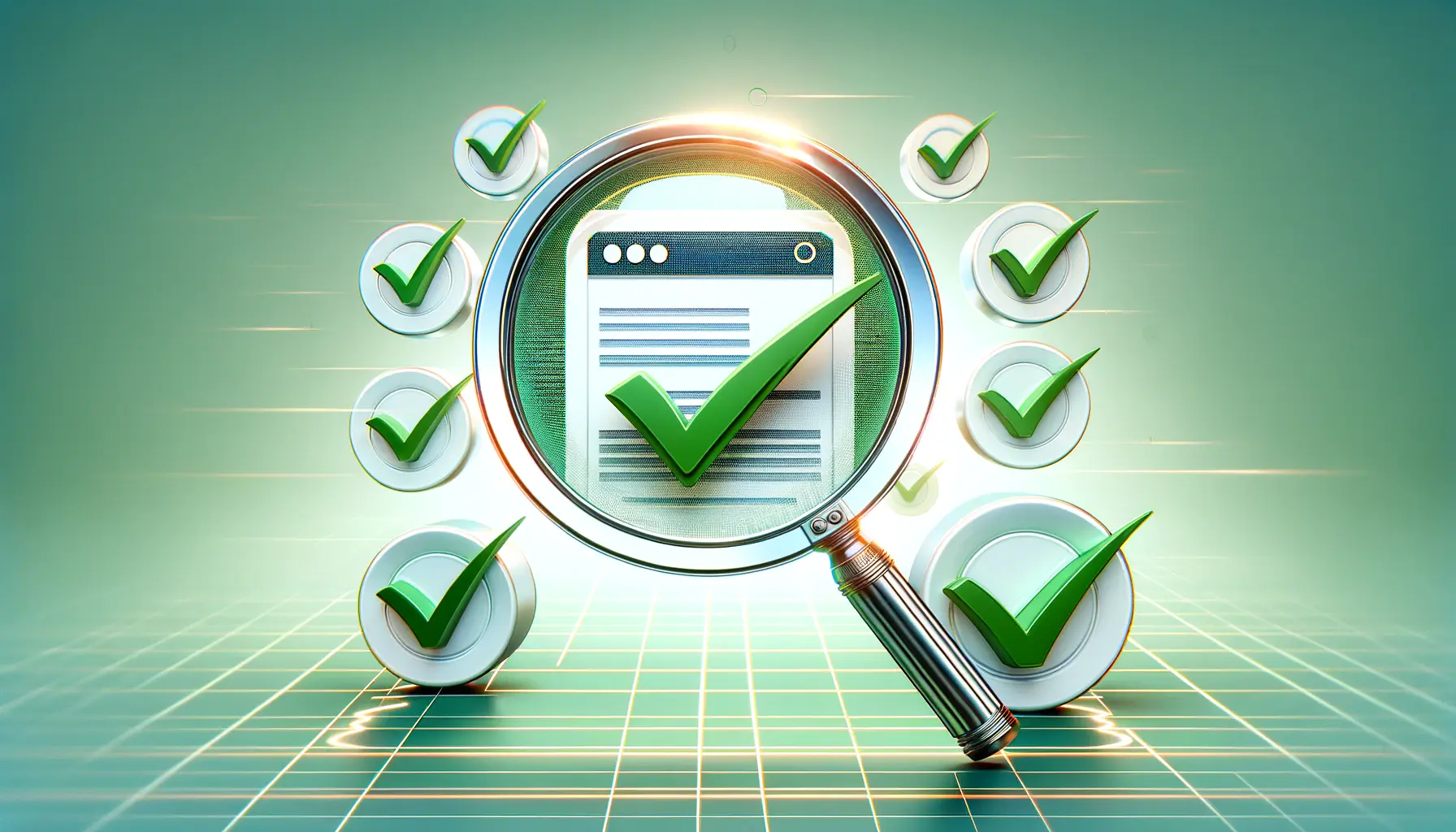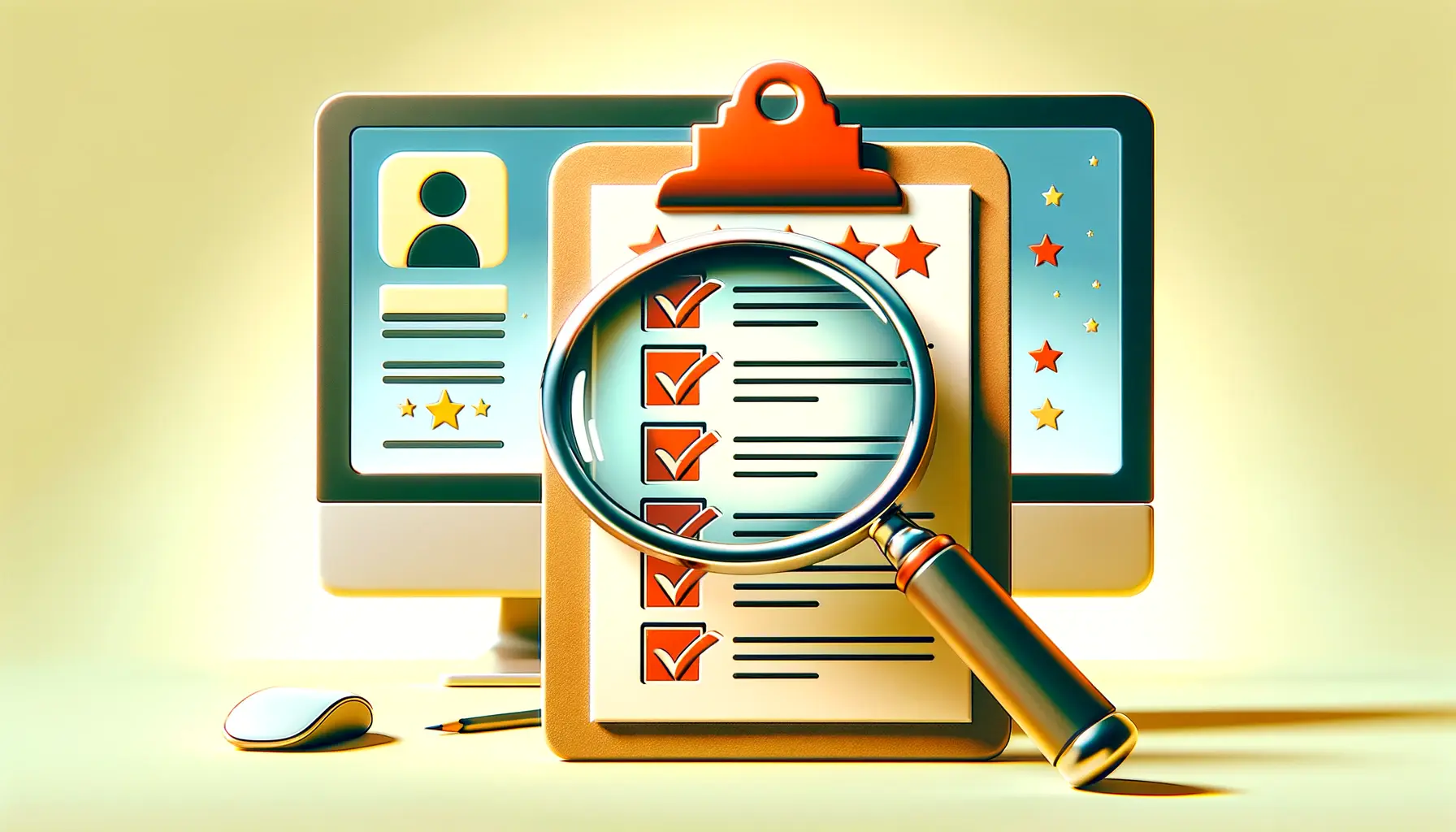Search Engine Optimization (SEO) for Software as a Service (SaaS) companies is a critical strategy that can significantly influence their online visibility and success.
In the digital age, where competition is fierce, and Google’s algorithms are ever-evolving, understanding and implementing effective SEO practices is paramount.
However, just as important is knowing what not to do.
Many SaaS companies, in their quest to rank higher on search engine results pages (SERPs), inadvertently engage in practices that can lead to penalties from Google.
These penalties can severely impact a website’s traffic, lead generation, and ultimately, its bottom line.
The landscape of SEO is littered with tales of caution, where even well-intentioned strategies have gone awry, leading to drops in rankings and visibility.
For SaaS companies, the stakes are even higher.
The SaaS business model relies heavily on online visibility to attract, convert, and retain customers.
Therefore, avoiding SEO penalties is not just about adhering to Google’s guidelines but about safeguarding the company’s digital presence and ensuring its growth trajectory remains uninterrupted.
- Understanding SEO Penalties
- Key SEO Practices to Avoid
- Strategies for Building a Healthy Link Profile
- Optimizing On-Page SEO for SaaS Companies
- Enhancing User Experience for SEO Benefits
- Implementing Technical SEO Best Practices
- Content Marketing and SEO Synergy
- Local SEO Strategies for Global SaaS Companies
- Conclusion: Navigating the Complex Landscape of SaaS SEO
- FAQs on Avoiding Penalties in SaaS SEO Practices
Understanding SEO Penalties
SEO penalties can be classified into two main categories: manual actions and algorithmic penalties.
Manual actions occur when a Google reviewer manually reviews a website and determines that it does not comply with Google’s webmaster guidelines.
These penalties are often the result of black-hat SEO techniques such as keyword stuffing, cloaking, or participating in link schemes.
On the other hand, algorithmic penalties are automatically triggered by Google’s algorithms when they detect patterns that suggest manipulative SEO practices.
For SaaS companies, the implications of these penalties can be far-reaching.
A penalty can lead to a significant drop in search rankings, which in turn can decrease website traffic, lead generation, and conversions.
Recovering from a penalty can be a time-consuming and resource-intensive process, requiring a thorough audit of SEO practices, identification of issues, and implementation of corrective measures.
Therefore, it is crucial for SaaS companies to adopt SEO strategies that are not only effective but also compliant with Google’s guidelines.
Key SEO Practices to Avoid
Several SEO practices can lead to penalties if not handled with care.
One of the most common mistakes is keyword stuffing, where keywords are excessively used in content or meta tags in an attempt to manipulate search rankings.
This practice not only leads to penalties but also degrades the quality of content, making it less useful and engaging for users.
Another risky practice is participating in link schemes, where links are bought or exchanged in an attempt to artificially inflate a site’s link profile.
Google’s algorithms have become increasingly sophisticated at detecting unnatural linking patterns, making this practice a direct route to penalties.
SaaS companies must focus on building natural, high-quality backlinks that are relevant to their content and offer real value to users.
It’s essential for SaaS companies to regularly audit their SEO practices and ensure they align with Google’s guidelines to avoid penalties and maintain their online visibility.
Strategies for Building a Healthy Link Profile
For SaaS companies, a healthy link profile is not just beneficial; it’s essential for long-term SEO success.
Building this profile requires a strategic approach that focuses on quality over quantity, relevance, and the natural acquisition of backlinks.
Here are key strategies to ensure your link-building efforts enhance your SEO without risking penalties.
Focus on High-Quality Content Creation
Creating high-quality, informative content is the cornerstone of a successful link-building strategy.
Content that provides value, solves problems, or answers questions is more likely to be shared and linked to by other websites.
This includes blog posts, case studies, infographics, and whitepapers relevant to your SaaS niche.
- Ensure content is original, engaging, and provides actionable insights.
- Use data and statistics to back up claims and add credibility.
- Regularly update content to keep it fresh and relevant.
Leverage Guest Blogging Opportunities
Guest blogging on reputable sites within your industry can significantly boost your link profile.
It allows you to reach a wider audience, establish authority, and secure valuable backlinks.
- Identify blogs or publications that align with your SaaS offering and audience.
- Propose topics that add value to the host site while highlighting your expertise.
- Include a link back to your website in a natural, contextually relevant way.
Engage in Community and Forum Participation
Active participation in industry forums and online communities can drive organic traffic and build backlinks.
By providing helpful answers and insights, you can establish your company as a thought leader and go-to resource.
- Choose forums and communities where your target audience is active.
- Avoid overt self-promotion; focus on adding value to the conversation.
- Include a link to your website in your forum signature or profile, where permitted.
Utilize Social Media Platforms
Social media platforms offer a vast potential for link building.
By sharing your content on social media, you increase its visibility and the likelihood of it being linked to by other sites.
- Share all new content on your company’s social media profiles.
- Engage with followers by responding to comments and participating in discussions.
- Use social media to build relationships with influencers and other businesses in your niche.
Remember, the goal of link building is not just to increase the number of backlinks but to enhance the overall quality and authority of your website in the eyes of search engines and users alike.
Optimizing On-Page SEO for SaaS Companies
On-page SEO is a critical component of a comprehensive SEO strategy, especially for SaaS companies looking to improve their online visibility and attract more qualified leads.
It involves optimizing various elements of your website to make it more appealing to search engines and users.
Here’s how to ensure your on-page SEO efforts are effective and penalty-free.
Title Tags and Meta Descriptions
Title tags and meta descriptions play a crucial role in on-page SEO.
They provide search engines and users with a brief overview of your page’s content.
To optimize these elements:
- Ensure every page has a unique and descriptive title tag that includes your main keyword.
- Write compelling meta descriptions that encourage users to click through to your website. Include relevant keywords naturally.
Header Tags for Content Structuring
Proper use of header tags (H1, H2, H3, etc.) helps structure your content, making it easier for both search engines and users to digest.
For optimal use:
- Use the H1 tag for your main title and ensure it includes your primary keyword.
- Break down your content into sections with H2 and H3 tags for subheadings, incorporating related keywords where appropriate.
Optimizing Images and Multimedia
Images and multimedia can enhance user engagement, but they need to be optimized to not negatively impact your site’s speed and performance.
To optimize images:
- Compress images to reduce file size without sacrificing quality.
- Use descriptive file names and alt tags for all images, including relevant keywords to improve accessibility and SEO.
Mobile Responsiveness and Site Speed
With the increasing use of mobile devices to access the internet, having a mobile-responsive website is non-negotiable.
Additionally, site speed affects both user experience and search engine rankings.
To optimize:
- Use responsive design to ensure your site looks and performs well on all devices.
- Improve site speed by optimizing images, minifying CSS and JavaScript, and leveraging browser caching.
Internal Linking Strategy
Internal linking helps search engines understand the structure of your site and distribute page authority throughout your pages.
To implement an effective internal linking strategy:
- Link to relevant content within your site to keep users engaged and reduce bounce rates.
- Use descriptive anchor text that gives users and search engines an idea of what the linked page is about.
On-page SEO is about making your website more accessible and appealing to both search engines and users. By focusing on these key elements, SaaS companies can improve their search engine rankings, drive more traffic, and ultimately, convert more leads.
Enhancing User Experience for SEO Benefits
User experience (UX) has become a critical factor in SEO, influencing not only how users interact with your website but also how search engines rank it.
For SaaS companies, providing an exceptional UX is paramount to ensuring that potential customers find the site accessible, informative, and engaging.
Here’s how to enhance UX for significant SEO benefits.
Site Navigation and Structure
Clear and intuitive site navigation is essential for a positive user experience.
It allows visitors to find the information they need quickly and effortlessly.
To optimize your site’s navigation and structure:
- Organize your content in a logical hierarchy, making it easy for users to navigate from general to more specific information.
- Use a consistent layout and design across all pages to reduce cognitive load and make the user journey seamless.
Content Readability and Accessibility
The readability and accessibility of your content directly impact user engagement and satisfaction.
Ensuring that your content is easy to read and accessible to all users is crucial.
To achieve this:
- Use short paragraphs, bullet points, and subheadings to break up text and make it easier to digest.
- Choose fonts and colors that ensure high contrast and readability across devices and for users with visual impairments.
Page Load Speed
Page load speed is a critical UX factor that significantly affects bounce rates and user satisfaction.
A slow-loading site can frustrate users and drive them away.
To improve page load speed:
- Optimize images and multimedia content to reduce their file size without compromising quality.
- Minimize the use of heavy scripts and plugins that can slow down your site.
Mobile Optimization
With the majority of internet traffic coming from mobile devices, ensuring your site is optimized for mobile is non-negotiable.
Mobile optimization affects both UX and SEO.
To optimize for mobile:
- Implement responsive design to ensure your site adjusts to fit the screen size of any device.
- Test your site on various devices and browsers to ensure compatibility and performance.
Interactive and Engaging Elements
Incorporating interactive and engaging elements into your website can significantly enhance the user experience, encouraging visitors to spend more time on your site.
However, it’s important to balance interactivity with performance.
To do this:
- Include interactive elements like quizzes, calculators, or interactive infographics that provide value to your users.
- Ensure that these elements are optimized for speed and do not negatively impact your site’s overall performance.
A superior user experience is not just about aesthetics; it’s about creating a seamless, efficient, and enjoyable journey for your users. By focusing on these aspects of UX, SaaS companies can improve their SEO rankings, drive more traffic, and ultimately, convert more leads.
Implementing Technical SEO Best Practices
Technical SEO is the foundation upon which all other SEO strategies are built.
For SaaS companies, ensuring that the technical aspects of their website are optimized is crucial for both search engine crawlers and user experience.
Here’s a deep dive into implementing technical SEO best practices that can significantly impact your site’s performance and rankings.
Secure and Accessible Website
Having a secure and easily accessible website is the first step in technical SEO.
This means:
- Using HTTPS to ensure a secure connection and protect your users’ data.
- Ensuring that your site’s robots.txt file is configured correctly to allow search engine crawlers to access your website’s content.
Optimized URL Structure
An optimized URL structure helps both users and search engines understand the content of a page at a glance.
To optimize your URL structure:
- Use URLs that are descriptive and include relevant keywords.
- Keep URLs as short and concise as possible.
- Avoid using unnecessary parameters or characters.
Site Speed Optimization
Site speed is a critical ranking factor and a key component of user experience.
To optimize your site’s speed:
- Compress images and use next-gen formats like WebP.
- Leverage browser caching to reduce load times for repeat visitors.
- Minify CSS, JavaScript, and HTML to reduce file sizes.
Structured Data Markup
Structured data markup, or schema markup, helps search engines understand the content of your site and provide more informative results to users.
Implementing structured data can enhance your visibility in SERPs.
To use structured data effectively:
- Use schema.org vocabulary to markup your content, including products, reviews, and articles.
- Test your structured data implementation with Google’s Structured Data Testing Tool.
Mobile-Friendly Design
With mobile-first indexing, having a mobile-friendly website is more important than ever.
To ensure your site is mobile-friendly:
- Use responsive design to ensure your site looks and functions well on all devices.
- Optimize touch elements and ensure they are easily clickable.
- Test your site’s mobile usability with Google’s Mobile-Friendly Test tool.
XML Sitemaps and Site Architecture
An XML sitemap helps search engines discover and index your pages more effectively.
Additionally, a well-organized site architecture improves crawlability and user navigation.
To optimize these elements:
- Create an XML sitemap and submit it to search engines via their respective webmaster tools.
- Organize your site’s content in a hierarchical structure that makes sense for users and search engines.
Technical SEO may seem daunting, but it’s an essential part of ensuring your SaaS website is discoverable, secure, and user-friendly. By implementing these best practices, you can lay a solid foundation for your site’s long-term SEO success.
Content Marketing and SEO Synergy
For SaaS companies, content marketing is not just about creating and distributing content; it’s about creating content that works in tandem with SEO to drive organic traffic, engage users, and convert leads.
The synergy between content marketing and SEO is crucial for enhancing online visibility and establishing authority in your niche.
Here’s how to ensure your content marketing efforts complement your SEO strategy effectively.
Keyword Research and Content Planning
Keyword research is the foundation of both SEO and content marketing.
It involves identifying the terms and phrases your target audience uses to search for solutions online.
To align your content marketing with SEO:
- Use keyword research tools to identify high-value keywords relevant to your SaaS offering.
- Plan your content around these keywords, ensuring it addresses the needs and questions of your target audience.
- Incorporate long-tail keywords into your content to target specific queries and improve your chances of ranking.
Creating High-Quality, SEO-Friendly Content
The quality of your content directly impacts your SEO performance.
High-quality, SEO-friendly content is informative, engaging, and optimized for search engines.
To create content that meets these criteria:
- Ensure your content provides value and answers the questions your audience is asking.
- Use keywords naturally throughout your content, including in the title, headings, and body text.
- Optimize your content for readability, using short paragraphs, bullet points, and images to break up text.
Link Building Through Content Marketing
Link building is a critical SEO strategy, and content marketing can be a powerful tool for earning high-quality backlinks.
To use content marketing for link building:
- Create shareable content such as infographics, research studies, and comprehensive guides that other sites want to link to.
- Promote your content through social media, email marketing, and outreach to increase its visibility and the likelihood of earning backlinks.
- Collaborate with influencers and industry leaders to expand your content’s reach and link-building potential.
Measuring Content Performance and SEO Impact
Measuring the performance of your content and its impact on SEO is essential for refining your strategy and achieving better results.
To effectively measure content performance:
- Use analytics tools to track metrics such as page views, time on page, bounce rate, and organic traffic.
- Monitor your rankings for target keywords to see how your content is impacting your SEO performance.
- Analyze backlink data to assess the quality and quantity of links your content is generating.
By integrating content marketing and SEO, SaaS companies can create a cohesive strategy that drives organic traffic, engages users, and converts leads. The key is to produce high-quality content that is optimized for both search engines and your target audience.
Local SEO Strategies for Global SaaS Companies
Global SaaS companies face the unique challenge of optimizing their online presence not just on a global scale, but also within local markets.
Local SEO is crucial for attracting and retaining customers in specific geographic locations, even for businesses that operate digitally worldwide.
Implementing effective local SEO strategies can significantly enhance visibility and engagement in these targeted areas.
Here’s how global SaaS companies can leverage local SEO for maximum impact.
Optimizing for Local Search Queries
Understanding and optimizing for local search queries is the first step in a successful local SEO strategy.
This involves:
- Identifying keywords and phrases that include local identifiers, such as city or region names, used by your target audience in different locales.
- Incorporating these local keywords into your website’s content, meta tags, and URLs to improve visibility for local searches.
Creating Location-Specific Content
Developing content that addresses the specific needs, questions, and interests of users in your target locales can significantly boost local engagement.
To create location-specific content:
- Research and understand the unique challenges or interests of users in each locale.
- Create blog posts, case studies, and landing pages tailored to these local audiences, highlighting how your SaaS solution meets their needs.
Utilizing Google My Business and Local Directories
For SaaS companies with physical offices or local representatives, Google My Business and other local directories are invaluable tools for improving local visibility.
To utilize these platforms effectively:
- Claim and optimize your Google My Business listing with accurate and comprehensive information, including your business name, address, phone number, and operating hours.
- Submit your business information to reputable local directories and ensure consistency across all listings.
Encouraging Local Reviews and Testimonials
Local reviews and testimonials can significantly influence your local SEO performance and credibility.
Encouraging satisfied customers in your target locales to leave positive reviews can help.
To encourage local reviews:
- Implement a process for soliciting reviews from customers following a purchase or interaction.
- Respond to all reviews, both positive and negative, in a professional and constructive manner.
Engaging with Local Communities and Events
Engaging with local communities and participating in or sponsoring local events can enhance your local presence and backlink profile.
To engage with local communities:
- Identify local events, conferences, and meetups relevant to your industry and consider participating or sponsoring.
- Collaborate with local businesses and influencers to co-create content or offer exclusive deals to their audiences.
Assuming local SEO is only for businesses with physical products or services is a misconception. Even global SaaS companies can significantly benefit from a tailored local SEO strategy to connect with customers on a more personal and relevant level.
Conclusion: Navigating the Complex Landscape of SaaS SEO
In the ever-evolving world of digital marketing, SaaS companies face unique challenges in optimizing their online presence to attract, engage, and convert their target audience.
The journey towards achieving and maintaining high search engine rankings is fraught with potential pitfalls, where the risk of incurring penalties looms large for those who stray from the path of best practices.
However, by adhering to the strategies outlined in this article, SaaS companies can navigate the complex landscape of SEO with confidence, ensuring their growth in the digital ecosystem remains robust and penalty-free.
Embracing Best Practices for Sustainable Growth
The key to successful SaaS SEO lies in understanding and implementing a holistic approach that balances technical optimization, content excellence, and user experience.
By focusing on building a healthy link profile, optimizing on-page elements, enhancing user experience, and adhering to technical SEO best practices, SaaS companies can create a solid foundation for their SEO efforts.
Moreover, the synergy between content marketing and SEO strategies plays a pivotal role in driving organic traffic and establishing domain authority.
Local SEO: A Gateway to Global Success
For global SaaS companies, local SEO emerges as a critical strategy for penetrating and dominating specific geographic markets.
By optimizing for local search queries, creating location-specific content, leveraging local directories, and engaging with local communities, SaaS businesses can achieve a more personalized connection with their audience.
This localized approach not only enhances visibility in targeted regions but also contributes to a more diversified and resilient online presence.
Future-Proofing Your SaaS SEO Strategy
As search engines continue to refine their algorithms, the importance of staying informed and adaptable cannot be overstated.
SaaS companies must remain vigilant, continuously monitoring their SEO performance and adjusting their strategies in response to algorithm updates and industry trends.
Investing in ongoing SEO education and consulting with experts can provide valuable insights and help avoid the pitfalls that lead to penalties.
- Regularly audit your SEO practices to identify and rectify potential issues before they escalate.
- Encourage a culture of SEO learning within your organization to foster innovative strategies that align with current best practices.
- Stay engaged with the SEO community through forums, blogs, and conferences to stay ahead of emerging trends and algorithm changes.
In conclusion, while the path to SEO success for SaaS companies is complex and fraught with challenges, it is also rich with opportunities for growth and engagement.
By prioritizing penalty avoidance through best practices, focusing on user experience, and embracing local SEO, SaaS companies can achieve sustainable growth in the digital age.
The future of SaaS SEO is dynamic and demands a proactive, informed approach to harness its full potential.
Want your website to top Google search rankings? Leave the SEO to our professional agency!
FAQs on Avoiding Penalties in SaaS SEO Practices
Understanding how to navigate SEO practices without incurring penalties is crucial for SaaS companies aiming for sustainable growth. Here are some frequently asked questions that shed light on common concerns and best practices.
SEO penalties are often triggered by manipulative practices like keyword stuffing, buying backlinks, cloaking, and publishing duplicate content. Adhering to Google’s guidelines is essential.
Recovery involves conducting a thorough SEO audit, identifying the issues, removing or disavowing harmful backlinks, improving content quality, and submitting a reconsideration request to Google.
Yes, manual actions are penalties applied by Google’s reviewers for guideline violations, while algorithmic penalties are automatic adjustments made by Google’s algorithms to rank sites fairly.
Local SEO practices can significantly benefit global SaaS companies by improving visibility in specific geographic markets, enhancing user experience, and driving targeted traffic.
High-quality content provides value to users, meets their search intent, and aligns with Google’s emphasis on user experience, reducing the risk of penalties.
A healthy link profile, characterized by high-quality, relevant backlinks, signals trustworthiness and authority to search engines, mitigating the risk of penalties.
Technical SEO ensures that a site is secure, fast, and easily crawlable by search engines, addressing key factors that influence rankings and penalty risk.
While it’s challenging to avoid all penalties, especially with evolving algorithms, adhering to SEO best practices and focusing on user experience can significantly reduce the risk.












